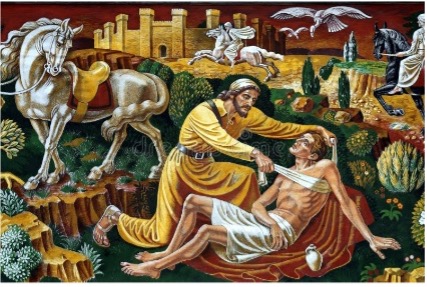However, ask yourself, if you will, whether there is a deeper meaning to the parable. Are we missing something? Is the parable simply about being good and kind and decent to your neighbour? We can be sure; absolutely sure in fact, that because Scripture is divinely inspired, there are always layers of revelation to uncover and a deeper meaning behind every verse.
Some of the early Fathers of Scripture scholarship, such as Origin, St. Augustine and St. Thomas Aquinas, discerned in the parable of the Good Samaritan a much deeper meaning than helping our neighbour. They approached the parable allegorically – in other words, as a device in which the characters or events represents or symbolise real people and real events and communicate a hidden and profound message. Approaching Scriptures allegorically can open deeper layers to its meaning. Some theologians dislike this approach because they fear that we can read into the text significance which the original author did not intend. But they themselves often approach Scripture in the wrong way, studying and discussing it like a Shakespeare play or another ancient text. Scripture is the divine Word of God and by its very nature there are always hidden depths to plumb.
So, for today, let us consider an allegorical understanding of the parable. Jerusalem represents heaven and Jericho the earth or the world. The robbers are the devil and the demons. The priest represents the Torah (the Jewish law) and the Levite the Prophets. The victim beaten, bruised, wounded and left half dead by the roadside is you! The Good Samaritan is Jesus, and the donkey is Christ’s body, which bears the weight of the broken body of the victim or this terrible robbery on the open highway. Finally, the inn represents the Church, our place of healing and sanctuary. The Good Samaritan’s promise to return is a reference to Jesus’ coming again in power and glory.


